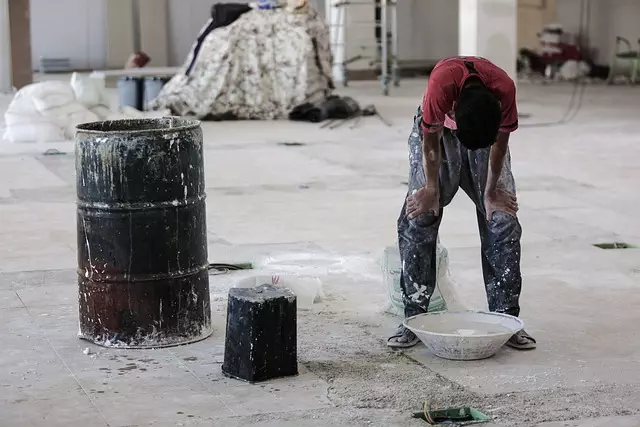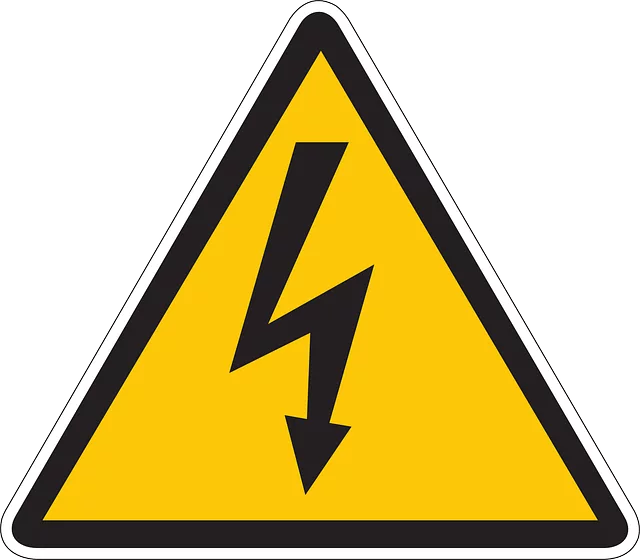OSHA workplace safety inspections are critical for ensuring proper use of Personal Protective Equipment (PPE) and adherence to hazard assessment protocols. These inspections involve reviewing PPE provisions, training records, and Safety Data Sheet (SDS) compliance. Hazard assessment protocols guide employers in identifying risks and selecting appropriate PPE, enhancing employee safety and mitigating non-compliance risks. Regular on-site inspections, including fit testing and training, along with proper documentation and adherence to SDS guidelines, are essential for maintaining a compliant and safe workplace environment. Continuous improvement through data analysis and updates to PPE protocols further strengthens OSHA compliance and worker protection.
Personal protective equipment (PPE) plays a crucial role in ensuring worker safety across various industries. Effective evaluation of PPE begins with understanding OSHA’s workplace safety inspection process and its vital role in identifying potential risks. This article explores key components, from hazard assessments to safety data sheet (SDS) compliance, offering a comprehensive guide for conducting on-site inspections. By analyzing findings, organizations can update PPE protocols, adhering to regulatory standards while fostering a culture of continuous improvement and employee protection.
- Understanding OSHA Workplace Safety Inspections and Their Role in PPE Evaluation
- The Importance of Hazard Assessment Protocols in Identifying PPE Needs
- Unraveling Safety Data Sheet (SDS) Compliance: A Key Component for Effective PPE Selection
- Comprehensive PPE Evaluation Process: Step-by-Step Guide
- Best Practices for Conducting On-Site PPE Inspections
- Analyzing Inspection Findings: Ensuring Employee Protection and Regulatory Adherence
- Continuous Improvement: Updating PPE Protocols Based on Inspection Results
Understanding OSHA Workplace Safety Inspections and Their Role in PPE Evaluation
OSHA (Occupational Safety and Health Administration) workplace safety inspections play a pivotal role in ensuring proper personal protective equipment (PPE) evaluation and adherence to hazard assessment protocols. These inspections are crucial tools for identifying potential risks and verifying employer compliance with safety standards. During an OSHA inspection, trained officials meticulously review an organization’s workplace, focusing on various aspects including PPE provisions, usage, and maintenance.
The process involves examining safety data sheets (SDS) to ensure that the provided PPE is suitable for the specific tasks and hazards present in the work environment. Inspections also delve into training records, evaluating if employees are adequately educated on using and maintaining their protective gear. This comprehensive approach ensures that workplaces meet the required standards, enhancing worker safety and minimizing risks associated with inadequate or improper use of PPE.
The Importance of Hazard Assessment Protocols in Identifying PPE Needs
In the realm of workplace safety, particularly during OSHA workplace safety inspections, hazard assessment protocols play a pivotal role in identifying Personal Protective Equipment (PPE) needs. These comprehensive protocols act as a compass, guiding employers to navigate through the complex landscape of potential risks and ensuring compliance with safety data sheet requirements. By meticulously evaluating work environments, tasks, and employee vulnerabilities, these protocols uncover hidden hazards that might otherwise go unnoticed.
This proactive approach is essential for selecting appropriate PPE, aligning with industry standards. Through hazard assessment, employers can determine whether physical, chemical, or biological dangers exist, necessitating specific types of protection. Such protocols ensure that PPE solutions are tailored to the unique needs of each workplace, enhancing employee safety and fostering a culture of vigilance in adherence to safety data sheet compliance regulations.
Unraveling Safety Data Sheet (SDS) Compliance: A Key Component for Effective PPE Selection
When it comes to personal protective equipment (PPE), ensuring compliance with Safety Data Sheets (SDS) is a vital step in any workplace safety protocol. SDS provide critical information about chemical hazards, necessary precautions, and proper usage — essential elements for effective PPE selection during OSHA workplace safety inspections.
During hazard assessment protocols, understanding the chemicals present in a work environment is crucial. The SDS offers detailed insights into these substances’ properties, including their potential risks and recommended exposure limits. Armed with this knowledge, safety professionals can select appropriate PPE, such as gloves, eye protection, or respirators, tailored to mitigate specific hazards. Adhering to SDS guidelines not only ensures the effectiveness of PPE but also fosters a culture of compliance and workplace safety.
Comprehensive PPE Evaluation Process: Step-by-Step Guide
A comprehensive PPE (Personal Protective Equipment) evaluation is an essential aspect of OSHA workplace safety inspections and hazard assessment protocols. It involves a systematic process that ensures employees are equipped with the right gear for their specific tasks, adhering to industry standards and safety data sheet (SDS) compliance.
The step-by-step guide begins with identifying potential hazards in the work environment through risk assessments. Once identified, determine the appropriate PPE required for each task or area. This includes selecting the correct types of protective garments, such as gloves, eye protection, respirators, or hard hats. Next, conduct a fitting and training session to educate employees on using the equipment correctly and efficiently. Regular inspections and maintenance are crucial; check for wear and tear, ensure proper cleaning, and replace damaged PPE promptly. Lastly, document every step of the evaluation process, keeping detailed records for future reference and to demonstrate compliance with OSHA regulations.
Best Practices for Conducting On-Site PPE Inspections
Conducting on-site PPE (Personal Protective Equipment) inspections is a critical aspect of ensuring OSHA workplace safety standards are met. These inspections should be thorough, systematic, and guided by comprehensive hazard assessment protocols. Begin by reviewing the job tasks and identifying potential risks and hazards that necessitate specific types of PPE. This step involves consulting with employees who perform these tasks daily to gain insights into their experiences and challenges. Once identified, each piece of PPE must be evaluated for proper fit, functionality, and condition. Inspectors should check for any signs of wear and tear, ensuring replacement is necessary if the equipment is damaged or no longer effective.
Compliance with safety data sheet (SDS) guidelines is paramount. SDS provide essential information about chemical hazards, including potential risks, safe handling procedures, and emergency response measures. Inspectors must verify that workers have access to relevant SDS for all chemicals they encounter and that they understand the instructions outlined in these documents. Regular training sessions on PPE usage, maintenance, and replacement should be conducted to empower employees to take an active role in their workplace safety. This proactive approach ensures a culture of safety where everyone understands their responsibilities in adhering to OSHA guidelines and maintaining a secure work environment.
Analyzing Inspection Findings: Ensuring Employee Protection and Regulatory Adherence
When conducting OSHA workplace safety inspections, analyzing inspection findings is a critical step in ensuring employee protection and regulatory adherence. This process involves meticulously reviewing observations, documenting hazards identified, and evaluating the effectiveness of existing control measures. By closely examining the results, organizations can pinpoint areas where their personal protective equipment (PPE) programs may need improvement. For instance, inspectors might uncover instances where employees are not using PPE as prescribed, or they may discover non-compliance with safety data sheet (SDS) guidelines for hazardous substances.
In light of these findings, companies must implement targeted strategies to enhance PPE use and adherence to hazard assessment protocols. This could include providing additional training on proper PPE selection and usage, ensuring access to up-to-date SDSs, and establishing clear communication channels for reporting safety concerns. Regular reevaluations of workplace risks and employee feedback are essential components of maintaining a robust PPE system that complies with OSHA standards.
Continuous Improvement: Updating PPE Protocols Based on Inspection Results
Continuous improvement is a cornerstone of effective personal protective equipment (PPE) management. Following OSHA workplace safety inspections and hazard assessments, organizations should analyze inspection results to identify areas for enhancement in their PPE protocols. This data-driven approach ensures that standards align with current industry best practices and evolving regulatory requirements.
Regularly updating PPE guidelines based on inspection findings fosters a culture of safety awareness and compliance. It also promotes adherence to safety data sheet (SDS) guidelines, ensuring employees are equipped with the most suitable and up-to-date protective gear for their specific tasks. This proactive strategy minimizes risks, enhances worker protection, and ultimately contributes to a safer, more efficient workplace environment.


